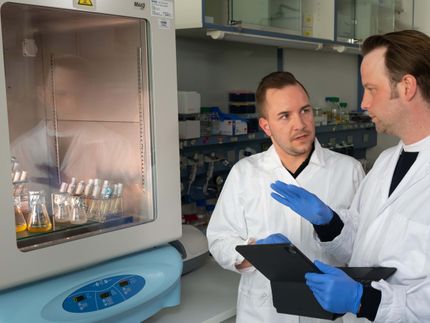Chemists explain the switchboards in our cells
Advertisement
Our cells are controlled by billions of molecular "switches" and chemists at UC Santa Barbara have developed a theory that explains how these molecules work. Their findings may significantly help efforts to build biologically based sensors for the detection of chemicals ranging from drugs to explosives to disease markers.
Their research is described in an article published this week in the Proceedings of the National Academy of Sciences (PNAS).
Biosensors are artificial molecular switches that mimic the natural ones, which direct chemical responses throughout the cell. "These switching molecules control the behavior of our cells," said Alexis Vallée-Bélisle, a postdoctoral scholar who spearheaded the project and is first author of the paper. "By studying these switches, we can better understand how living organisms are able to monitor their environment and use this knowledge to build better sensors to detect, for example, disease markers."
All creatures, from bacteria to humans, must monitor their environments in order to survive, explained the authors. They do so with biomolecular switches, made from RNA or proteins. For example, in our sinuses, there are receptor proteins that can detect different odors. Some of those scents warn us of danger; others tell us that food is nearby.
In addition to deriving the mathematical relationships underlying switching, Vallée-Bélisle spent months performing a hands-on study of an artificial biomolecular switch to demonstrate that the theory holds up quantitatively.
Like a light switch, biomolecular switches often exist in two states – on or off. When a biomolecule switches from on to off, or vice versa, its shape changes. This change in structure is often triggered by the physical binding of a signaling molecule (for example, the odorant molecule responsible for a given smell) to the switch. However, unlike the single light switch that controls any one light in a house, cells use hundreds to millions of copies of each switch. Because there is more than one copy involved, the switching process is not a binary, "all-or-none" process. Instead, the output signal is determined by the fraction of switches that move from the off state to the on state.
In their PNAS paper, the authors describe a simple mathematical model that will allow biotech researchers to fine-tune the ease with which artificial biomolecular switches can be "flipped." They also shed light on how natural biomolecular switches evolved.






























































